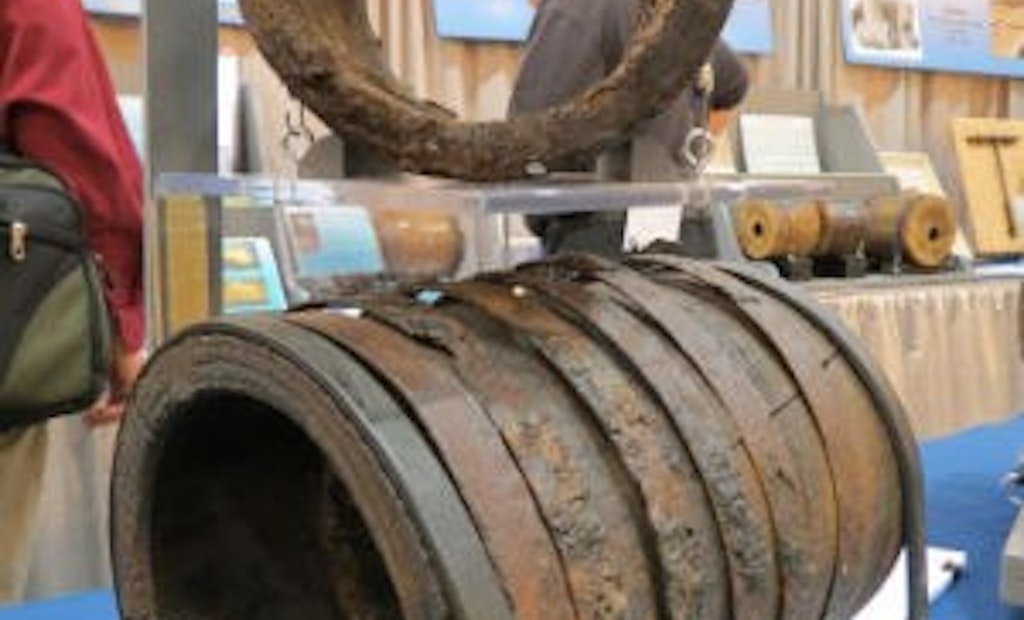
Interested in Infrastructure?
Get Infrastructure articles, news and videos right in your inbox! Sign up now.
Infrastructure + Get AlertsWhile thousands of new and innovative products aimed at improving water and wastewater infrastructure hit the market every year, it’s also important to remember where the industry came from. A historical display, recently shown at WEFTEC 2014 in New Orleans, and sponsored by NASSCO and the Water Environment Federation, did just that.
In the 1700s, when the United States was in its infancy — and growing municipalities began worrying about how to get potable water and wastewater from Point A to Point B — city founders used what was readily available. Across much of North America, that material was wood, specifically huge virgin white pine timbers. The first municipal piping systems were constructed of 8-foot bored-out white pine timbers, which were shallowly buried to carry gravity-fed freshwater to homes and businesses. The concept wasn’t exactly new — even in the 1700s.
According to Jon Schladweiler, curator of the Sewer History Exhibit, European towns and cities began using wooden water pipes as early as the 1400s.
“When settlers came to the U.S., wood is what they had an abundance of, so that’s what they used,” he says. “It’s actually surprisingly durable and effective.”
The first wooden pipes consisted of logs of varied circumference, with hearts that were bored out by hand using long boring drills. The installer would first drill a small pilot hole through the middle of the log, and then use a larger bit to create a 3- to 4-inch-diameter hole through the length of the log. Smaller wooden thimble joints connected the pipes. Although obviously gasket material was unavailable, the piping systems were surprisingly watertight.
“There might have been some looseness in the piping when first installed, but as soon as they sent water through, the wood would expand, effectively sealing those logs together,” says Schladweiler. “If done correctly, the pipes would last for decades.”
Municipalities tried using similar technology to pipe wastewater, but found less success. Although the piping worked initially, it often needed to be replaced as quickly as a year or two later.
“The bacteria and acids in wastewater actually consumed the pipe from the inside out,” says Schladweiler. “That’s why we began seeing other materials used for wastewater pipes.”
For moving potable water, though, wooden pipes were considered the norm for decades. Some municipalities even used the pipes as late as the 1960s. The construction technology also improved. Wood piping from the late 1800s was machined to create smooth-bore, uniform-circumference piping that would handle flows up to 60 psi. A machine auger drilled a smooth interior bore, while a machine lathe created uniform circumference. The pipes were then spiral-wrapped with steel bands for added durability. Often referred to as Wykoff Pipe, the material was produced by Michigan Pipe Company.
Formerly housed in Tucson, Ariz., where Schladweiler retired after working for 30 years as a municipal operator, the Sewer History Exhibit changed ownership from AZ Water to NASSCO, and will soon be housed near NASSCO’s headquarters in Baltimore. Schladweiler hopes to get the word out regarding the industry’s rich, buried history.
“These pieces are a great conversation starter in the sewer and water industry,” he says. “When you look as today’s systems, and see everything computerized and high-tech, it’s sometimes tough to realize these wood pipes are where it came from.”





